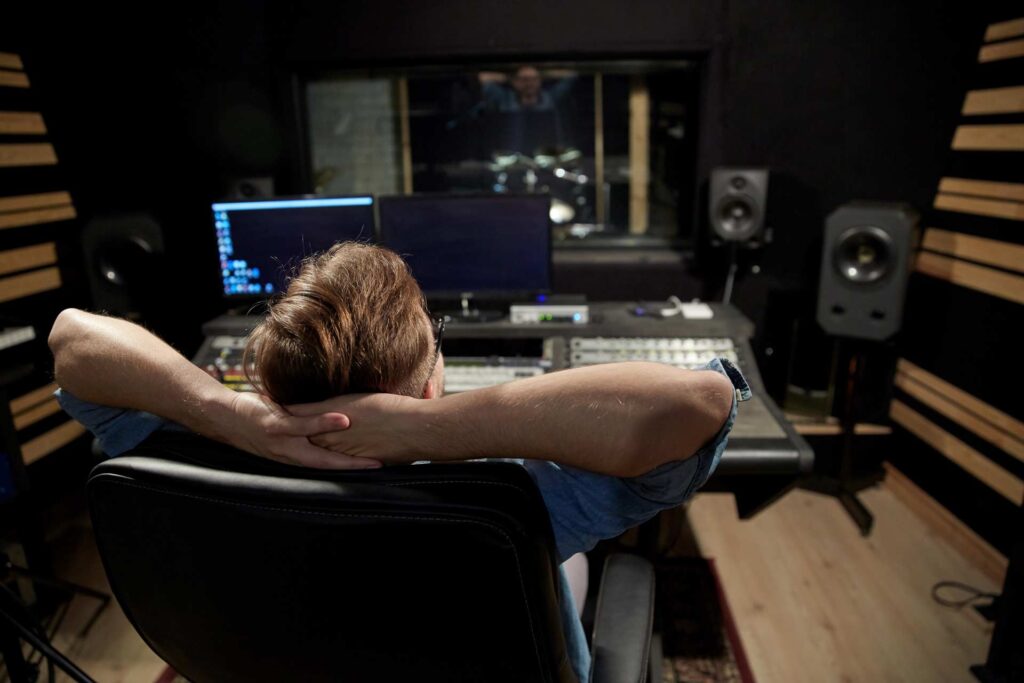Table of Contents
Introduction To Home Vocal Recording

Home vocal recording can be an exciting endeavor, offering a chance to capture your music in a comfortable setting. However, achieving professional-quality results requires careful preparation and attention to detail. In this comprehensive guide, we’ll explore the essential steps and techniques for recording vocals at home, ensuring you can achieve a great sound with every take.
Preparation

Before diving into the home vocal recording process, it’s crucial to prepare your recording environment and equipment. Here’s how to get started:
Pick a Room to Record In
Selecting the right room for recording vocals is paramount. Look for a space that is quiet and has favorable acoustics. Striking a balance between liveliness and deadness in the room can enhance sound quality.
Adjust the Microphone Position
Proper microphone placement is essential for capturing clear and natural vocals. Position the microphone away from walls to minimize reflections and echo, aiming for the center of the room for optimal sound quality.
Take Care of the Acoustics
Improve the acoustics of your recording space by adding sound-absorbing materials such as acoustic panels or bass traps. This enhances home vocal recording and creates a more comfortable working environment.
Choose the Right Microphone
Decide between condenser and dynamic microphones based on your budget and recording needs. While condenser microphones offer superior sound quality, dynamic microphones are more budget-friendly and resistant to feedback.
Recording Technique

Mastering recording techniques is key to capturing professional-quality vocals at home. Follow these steps for optimal results:
Levels
Set appropriate recording levels to avoid distortion or noise interference. Aim for around -12 dB on the level meters in your recording software for balanced signal input.
Timing
Maintain precise timing during recording by setting the BPM (beats per minute) of your song and using a metronome click for synchronization. This ensures a consistent rhythm throughout the performance.
Compression
Utilize compression to even out vocal levels and enhance consistency. Adjust threshold, ratio, and attack/release times to achieve desired dynamics and fullness in the vocal sound.
Microphone Position
Position the microphone approximately 6 inches from the mouth, avoiding direct alignment with the nose to prevent nasal tones. Experiment with proximity for varying sound characteristics.
Condenser vs. Dynamic
Consider the microphone type when positioning for recording. Dynamic microphones may require off-axis placement, while condenser microphones benefit from direct alignment with the mouth.
Microphone Height
Maintain an optimal microphone height of approximately 6 inches below the chin to balance high and low frequencies effectively.
Axis Rotation
Adjust the microphone angle (axis rotation) to direct the sound accurately into the microphone for optimal recording quality.
Polar Pattern
Select the appropriate microphone polar pattern (cardioid, omnidirectional, or bidirectional) based on recording requirements and environmental factors.
Use a Windscreen
Minimize unwanted noise and plosive sounds by using a windscreen over the microphone. This simple accessory improves recording clarity and quality.
Performance

With technical aspects addressed, focus on delivering a confident and expressive performance:
Perform with Confidence: Relax and engage with the music, maintaining confidence throughout the recording process. Embrace imperfections and focus on conveying emotion through your vocals.
FAQs
How can I record my voice and make it sound better?
Home vocal recording can yield professional-quality results with the right techniques. Follow the steps outlined in this guide to enhance your vocal recordings and achieve a polished sound.
What is the best way to record vocals at home?
The best approach to recording vocals at home involves careful preparation of the recording environment, selection of suitable equipment, and mastering recording techniques. By following the steps outlined in this guide, you can capture high-quality vocals in a home studio setting.
How do I make my home recording sound professional?
Achieving a professional sound in home vocal recording requires attention to detail in areas such as room acoustics, microphone placement, and recording technique. By implementing the tips and techniques discussed in this guide, you can elevate your home recordings to a professional standard.
How can I record my voice at home professionally?
home vocal recording professionally involves creating an optimal recording environment, selecting appropriate equipment, and mastering recording techniques. By following the comprehensive guidance provided in this article, you can achieve professional-quality vocal recordings in a home studio setup.





No comment